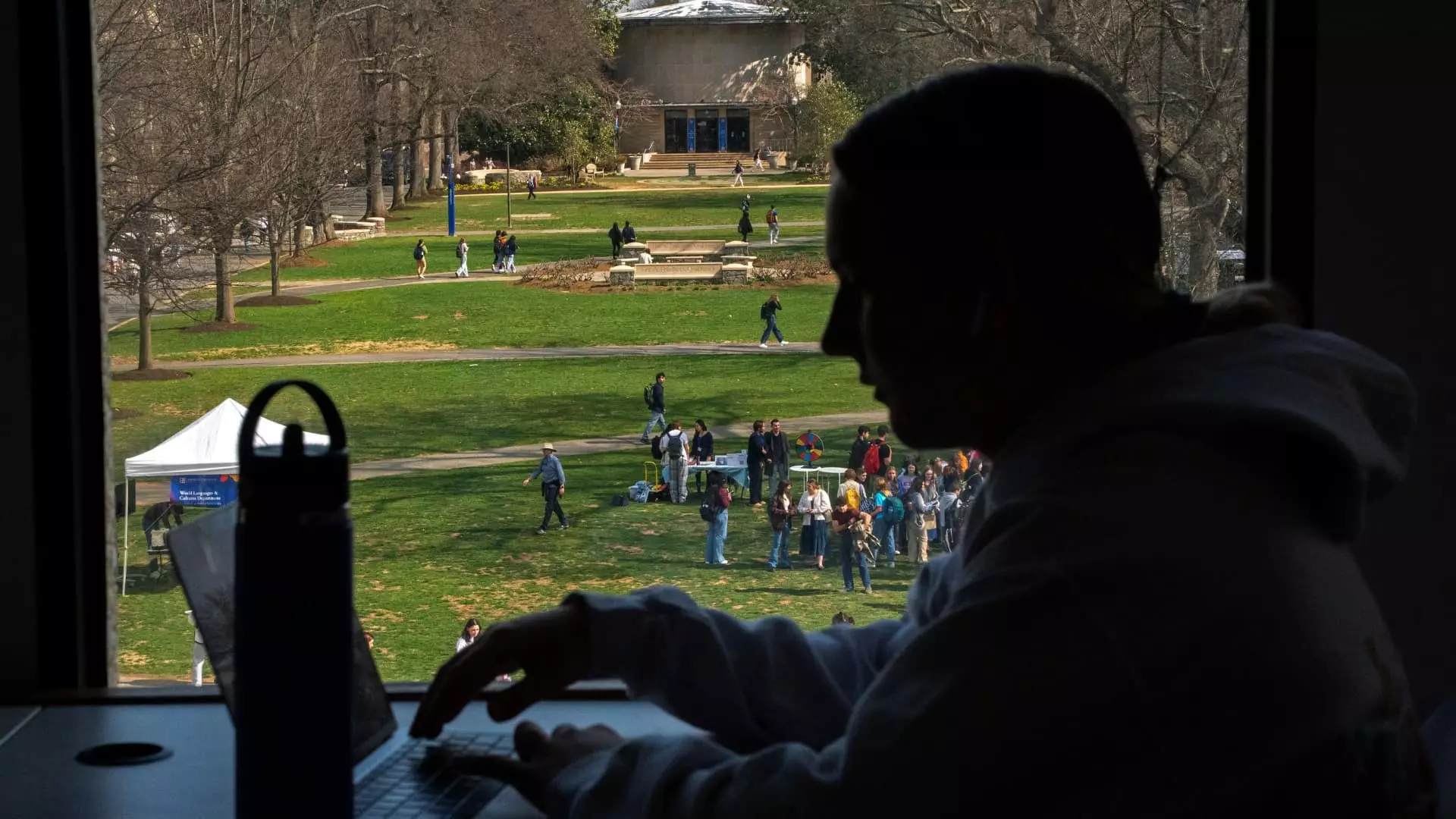The financial landscape for student loan borrowers is on the brink of a significant shake-up, as an estimated 9 million individuals are projected to fall behind on their payments. The Federal Reserve Bank of New York has issued a stark warning: borrowers could see their credit scores plummet by as much as 171 points if they miss payments in the first half of 2025. The ramifications of this impending crisis exceed mere statistics; they threaten the very foundation of financial stability for millions. High credit scores, which usually read between 300 and 850 with anything above 670 considered good, will become an elusive dream for many, especially those who once stood confidently in the upper echelons of creditworthyness.
This crisis is particularly damning for borrowers who have enjoyed favorable credit scores until now. The fall into delinquency doesn’t just signify a temporary setback; it can entrench borrowers in a long-term cycle of financial distress. For those starting with scores under 620, the expected decline of 87 points might seem minor; however, the potential damage to their credit rating can detract from their ability to secure loans in the future, exacerbating their situation. The financial system often punishes those already at a disadvantage, revealing a harrowing truth: once damaged, credit scores can haunt individuals for as long as seven years.
The Aftermath of Pandemic Relief and its Fallout
After a suspended collection period during the pandemic, the expiration of federal protections on September 30, 2024, signals a harsh return to normalcy for student loan borrowers. This transition has been anything but seamless. As student loan delinquencies made their unwelcome return to credit reports, borrowers are likely to encounter a cascade of detrimental consequences that stretch far beyond immediate financial obligations. For borrowers who had relied on this reprieve, re-entering the world of debt collection may feel like an abrupt, unwelcome awakening to a financial nightmare.
Doug Boneparth, a financial planner, sheds light on this looming crisis, indicating that the punitive nature of falling credit scores will limit access to affordable financing—constraining borrowers within a cycle of heightened borrowing costs and thwarting their hopes of moving towards financial stability. This perspective underscores that many borrowers may not just be facing temporary financial issues; they could be setting themselves up for enduring financial hardship that will echo throughout their lives.
Strategies for Navigating the Student Loan Minefield
Though the situation is dire, experts assert that there are pathways available for borrowers to mitigate potential damage to their credit scores. Applying for an income-driven repayment plan can be an effective strategy for managing monthly payments, with the possibility of capping them at a manageable percentage of discretionary income. In fact, many borrowers might even find their monthly payments reduced to zero, providing much-needed respite during financially challenging times.
Additionally, the re-opening of applications for various Income-Driven Repayment plans provides a much-needed lifeline for borrowers uncertain about their repayment options. Although entering deferment or forbearance may reflect a failure to make timely payments on one’s credit report, it can prevent borrowers from being marked as delinquent—an essential distinction that can safeguard their long-term financial health.
For those already in default, the process of rehabilitation or consolidation emerges as a viable option to restore a current status. With regulatory guidance suggesting that this involves making a series of consistent, voluntary payments, proactive borrowers can take control of their situation. Understanding one’s loan servicer is crucial, and valuable resources like Studentaid.gov can be the difference between financial chaos and clarity.
Monitoring Your Financial Health
In a world where misinformation can run rampant, it is paramount for student loan borrowers to keep a vigilant eye on their credit reports. Sites like AnnualCreditReport.com offer individuals a way to check their credit standing without incurring costs. Regularly verifying one’s credit status ensures that any discrepancies—especially regarding student loan balances and payment status—can be addressed promptly.
As the countdown to the potential credit catastrophe continues, student loan borrowers need to embrace a multisided approach to financial management. By arming themselves with knowledge, employing strategic repayment plans, and paying close attention to their credit data, borrowers can navigate this storm. It’s a difficult journey, but with forethought and diligent management, it is possible to withstand the upheaval awaiting them in 2025.

